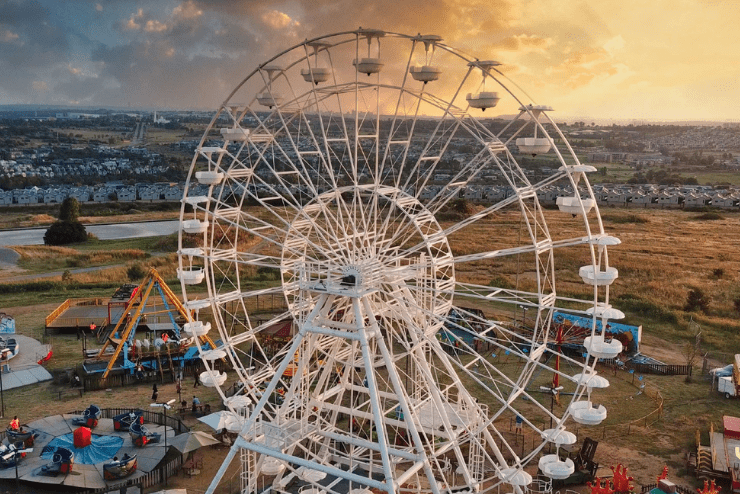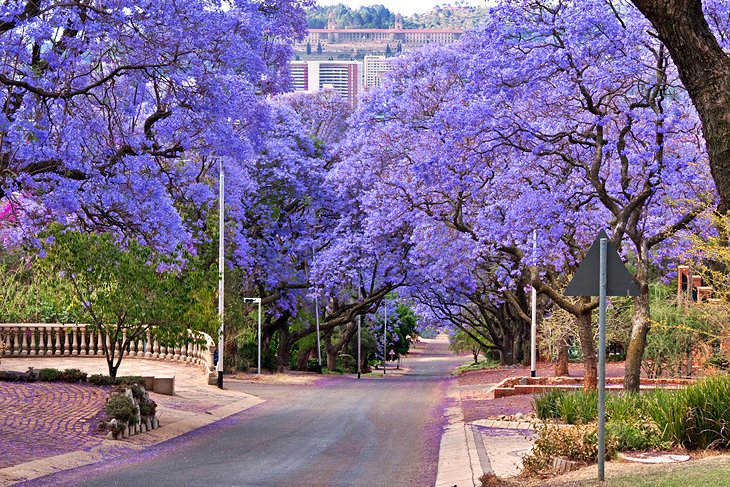Things about Johannesburg North Attractions
Table of ContentsLittle Known Questions About Johannesburg North Attractions.The Definitive Guide for Johannesburg North Attractions5 Simple Techniques For Johannesburg North AttractionsSome Known Details About Johannesburg North Attractions 6 Easy Facts About Johannesburg North Attractions ShownThe Best Guide To Johannesburg North Attractions
The city grew on the side of the Witwatersrand Key Coral reef, a subterranean stratum of gold-bearing quartz-silica corporation that arcs for hundreds of miles underneath the Highveld - Johannesburg North attractions. Many of the gold mines in the city discontinued procedure in the 1970s, yet in its day the Witwatersrand gold industry accounted for even more than 40 percent of the globe's yearly gold manufacturing.Johannesburg has a pleasant environment. The city takes pleasure in concerning eight hours of sunlight per day in both winter season and summer.
What rainfall the city obtains drops nearly solely in the summertime months, commonly in magnificent late-afternoon electrical tornados. Air contamination postures a substantial issue, particularly in the winter months, when thermal inversions impede the westward circulation of air from the Indian Sea. Pollution is most severe in the largely cleared up Black towns on the city's periphery, where several citizens still depend on coal for fuel.

Getting My Johannesburg North Attractions To Work
The balance of the city is occupied by whites. Accommodation varies in personality and top quality. Soweto is infamous for its limitless rows of municipally developed, two-room matchbox homes, yet it likewise has a few flourishing territories in addition to bursting squatter camps, where tens of thousands live without water, electricity, or hygiene centers.
Physical development, although somewhat limited by transport, continued rapidly as migration to South Africa, and Johannesburg in specific, raised drastically. This issue was resolved in the 1930s when the vehicle was introduced in mass production to South Africa. Automobiles were, essentially, confined to the affluent, and permitted them to relocate to the north of the city and commute into the centre.
Most bad residential areas were combined, with inadequate blacks and whites living with each other, although the wealthy suburbs were typically booked for whites.
The number of individuals living in the inner city on an informal basis is unidentified, as many are unlawful immigrants. The joblessness, education and learning, and age accounts of the area are all unknown, due to the trouble of getting top article trusted info regarding the area.
Not known Facts About Johannesburg North Attractions
Centred on the CBD, the region consists of the suburbs of Yeoville, Bellevue, Troyeville, Jeppestown, and Berea to the eastern. To the west it infects Pageview (Johannesburg North attractions) and Fordsburg. There are little Home Page industrial parks to the south, such as City West-Denver and Benrose. Around 800,000 travelers travel through the central city on a daily basis, and it works as a local shopping node for site visitors from the southern suburban areas. Yeoville and Bellevue have a mix of home structures and single property systems on tiny whole lots. The region is located on a mountainous divide that runs from eastern to west.

Johannesburg Stadium, a training school for both the Golden Lions and Orlando Pirates, is surrounding. The eastern suburban areas of Johannesburg lie in the city's 7th [] and 9th [] areas. The area is also functionally incorporated with East Rand border towns beyond the official border of Johannesburg, such as Bedfordview and Edenvale (both part of Ekurhuleni Metropolitan District).
Some Known Facts About Johannesburg North Attractions.
R. Tambo International Airport Terminal). The eastern suburbs are several of the oldest areas of Johannesburg, there are huge communities of Jewish and other European histories, most of the populace is English talking. There are three golf links along with a number of protected ridges with viewsites. There are several strong and up-market amusement and shopping areas in the east such as the Eastgate Mall and the Greenstone mall.
The location is mostly composed of old "matchbox" houses, or four-room houses developed by the federal government, that were constructed to give affordable holiday accommodation for black workers during apartheid. Soweto is an abbreviation, meaning "South Western Townships". Street after street in this field is lined with matchboxes; nevertheless, there are a couple of smaller sized locations where thriving Sowetans have developed residences that are more similar in stature with those in even more affluent suburbs.
Hostels are another prominent physical feature of Soweto. Initially constructed to house male migrant employees, several have actually been boosted as residences for pairs and family members. The N1 Western Bypass skirts the eastern limit of Soweto. The residential area was not historically enabled to create employment centres within the location, so nearly all of its citizens are commuters to other parts of the city.
Johannesburg North Attractions Can Be Fun For Everyone
The N1 Western Bypass connects the north residential areas with the north-western suburban areas. The houses in the north suburbs are mainly official, with no substantial areas of informal real estate, or housing that does not have a permanent structure. This is a recognized area, there is a Full Article fad of land use change from property to business, specifically along main arterial roads and around well established nodes.
The location is well linked to roadway networks, specifically along the north-south axis created by the M1 and N1. Roadways to the eastern and west are less well established, as there are no freeways travelling in that direction. Towards the northern boundary of the city, the thickness of growth lowers, leaving huge locations of primitive land around Midrand.
Some Known Factual Statements About Johannesburg North Attractions
, which is situated on a hill neglecting the internal city and Hillbrow.
Comments on “The Only Guide for Johannesburg North Attractions”